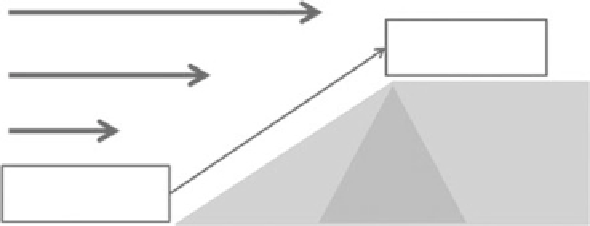Geoscience Reference
In-Depth Information
(a)
T
2
≥
T
z
;
but
r
=
r
sat
(at
T
2
)
Temperature of
surrounding air =
T
z
Temperature =
T
2
Mixing ratio =
r
i.e., the air is still warmer than
the surrounding air
but is now saturated
Buoyant ascent
T
1
≥
T
0
;
but
r
<
r
sat
(at
T
0
)
Temperature of
surrounding air =
T
0
Temperature =
T
1
Mixing ratio =
r
i.e., the air is warmer than
the surrounding air
and is unsaturated
(b)
Temperature =
T
2
Mixing ratio =
r
T
2
≥
T
z
;
but
r
=
r
sat
(at
T
2
)
Cooler air mass
or
topography
Temperature =
T
1
Mixing ratio =
r
T
1
≥
T
0
;
but
r
<
r
sat
(at
T
0
)
(c)
8
6
Cool moist air
Figure 10.1
Mechanisms for
atmospheric cooling to give
cloud: (a) convective ascent;
(b) horizontal movement of air
masses; and (c) near-surface
mixing of saturated air with
different temperatures.
4
Mixed moist air
Warm moist air
Saturated
2
0
0
20
40
T
C
C
Cloud generating mechanisms
Differential buoyancy in the air, and the convective thermals that result, provide
an important mechanism by means of which air can be cooled and clouds
formed. The process involved is comparatively simple (Fig. 10.1a). A parcel of
unsaturated air whose temperature is higher than the air that surrounds it is
buoyant and rises. As it does so, it cools. As long as it remains buoyant relative
to the surrounding air, it continues to rise; if it cools enough to become saturated,







